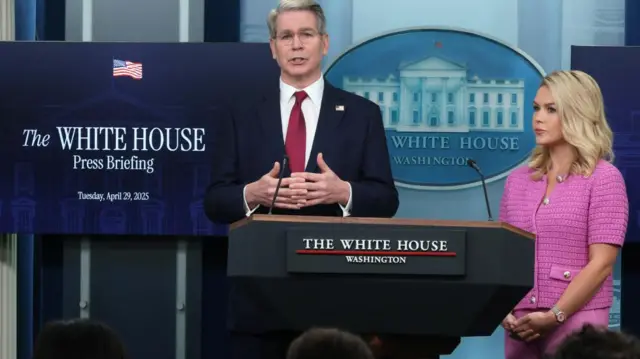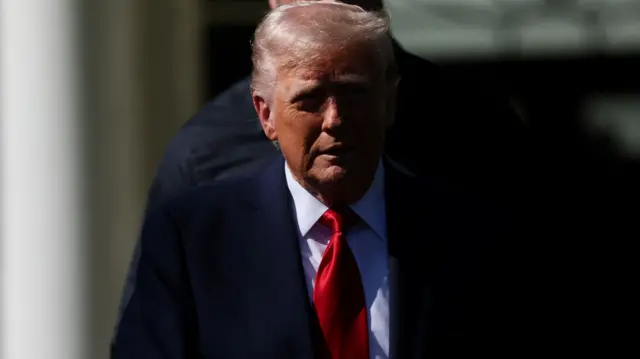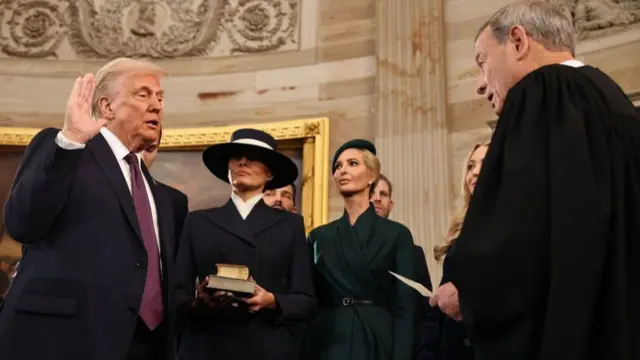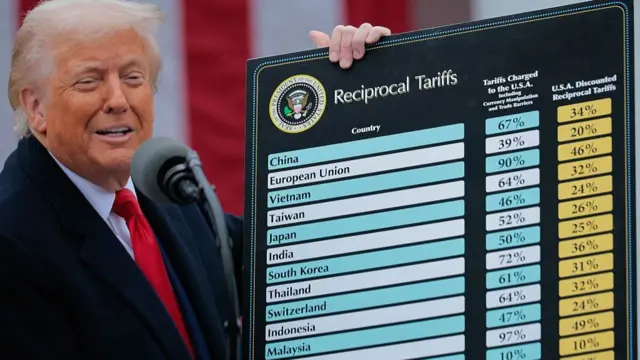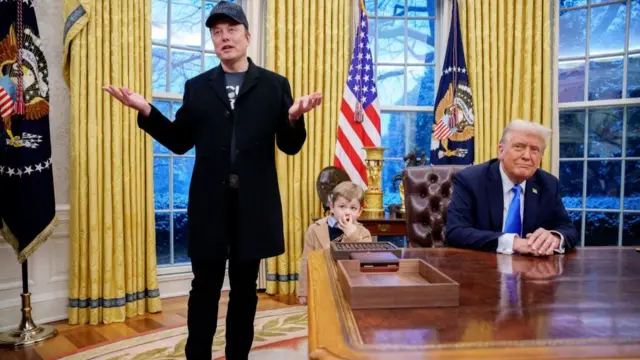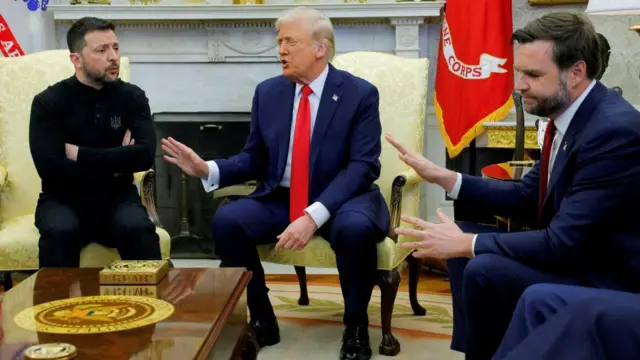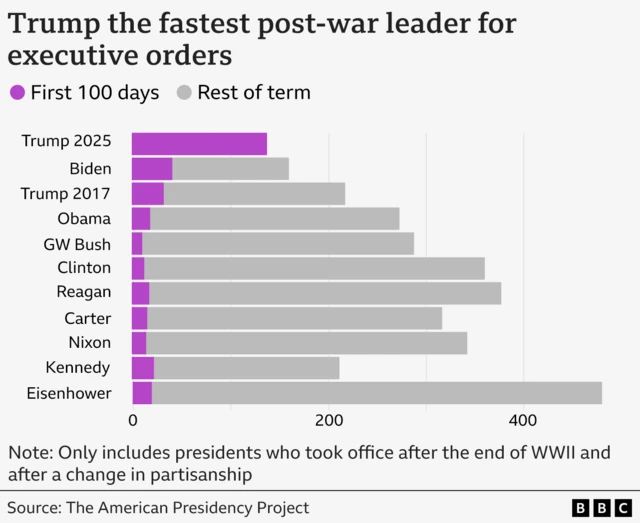What about the trade war between China and the US?published at 14:01 British Summer Time 29 April
Now asked about China, Trump's Treasury secretary says the US's tariffs on China are "unsustainable for China".
He claims to have seen data that suggests China could lose 10 million jobs "very quickly", but doesn't specify where these numbers come from.
"The onus is on them" to adjust their tariffs, Bessent says, because China sells more goods to the US.
Pressed about whether talks with Beijing are taking place, Bessent says he won't get into the "nitty gritty of whom is talking to whom".
- For context: Chinese exports to the US face up to 245% tariffs, and Beijing has hit back with a 125% levy on American imports. Chinese President Xi Jinping's government has repeatedly said it is open to dialogue, but warned that, if necessary, it would "fight to the end". Get up to speed with the trade war between the world's two largest economies in this piece.
